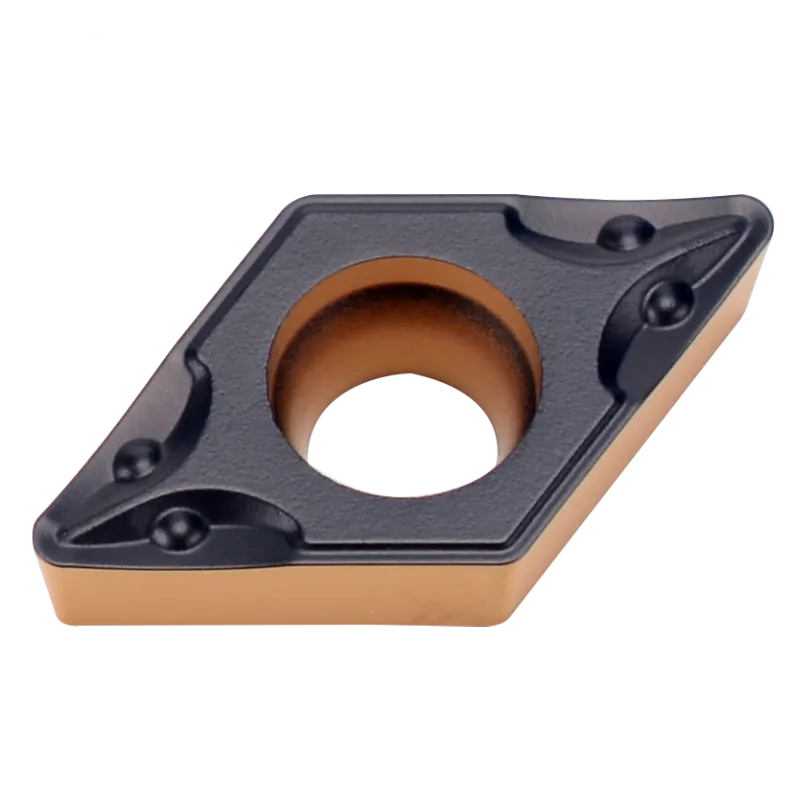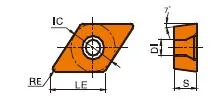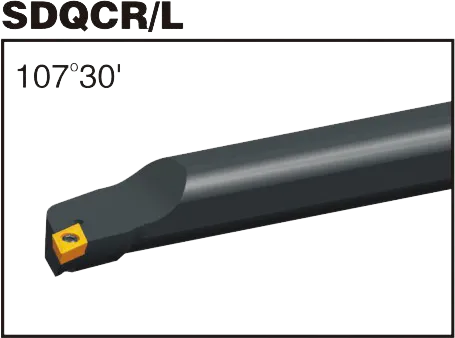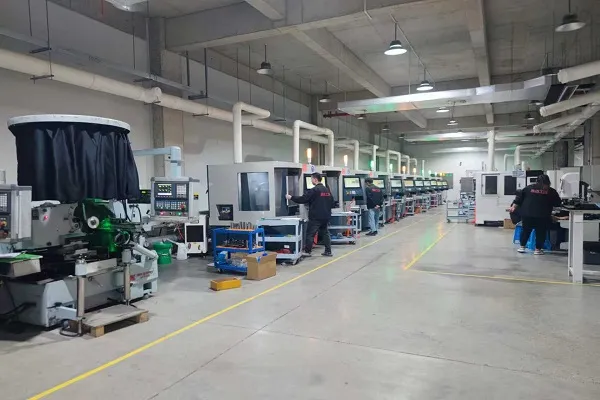

DCMT insert
DCMT insert angle: 7° Positive rake insert with a single-sided Chipbreaker;
55° rhombic turning insert;
Recommended for steel, stainless steel, and cast iron;
Breaker Application: Semi-finishing machining;
Matching DCMT insert holder: SDQCR/L, SDUCR/L;
Material : Tungsten carbide;
Grade: Both PVD and CVD;
Application industry: Die & mould, medical devices, manufacturing, and others;
DCMT insert specification
DCMT insert meaning a diamond-shaped (55 degrees), indexable cutting insert with a 7-degree clearance angle, moderate tolerances, and a built-in chipbreaker.
These inserts are commonly used for various turning operations in metalworking.
The nose radius has crucial effects on the surface finish, chip breaking, and insert strength.
We offer several different nose radius selections to help to enhance working quality. Generally speaking, Small nose radius will lead to small cutting depth, reduce vibration and enhance chip breaking.
On the other side, the large nose radius will be suitable for high feed rate, large depths of cut, and strong edge stability.
The relationship between nose radius and depth of cut affects vibration tendencies.
DCMT insert tool holder


DCMT insert Meaning
Understanding the DCMT Insert Code
- D: Shape: Rhombic (diamond) with a 55-degree included angle.
- C : Clearance Angle: 7 degrees (positive)
- M : Tolerance: Medium tolerance is standard, though other precision tolerances might be available.
- T: Chipbreaker style & Hole Configuration. This letter designates the specific chipbreaker geometry and whether the insert has a hole or not. Chipbreaker variations are numerous and manufacturer-specific.
- Chiffres numériques :
- Deux premiers chiffres : Inscribed circle (IC) diameter in millimeters. To obtain the approximate inch equivalent, divide this number by 25.4.
- Prochain Deux Chiffres : Thickness in millimeters. Divide by 25.4 to convert to inches.
- Last Two Digits: Nose radius in millimeters. To convert to inches, divide by 25.4.
DCMT Insert Dimensions (ISO and ANSI)
| DCMT Insert Sizes | |||
|---|---|---|---|
| DCMT Designation | Cercle inscrit (CI) | Épaisseur | Common Corner Radii |
| DCMT 21.51 (DCMT 0702) | 0.25" (1/4") | 0.094" (3/32") | 0.0156" (1/64") |
| DCMT 070204 | 7.94mm (0.313") | 2.38mm (0.094") | 0,4 mm (0,016") |
| DCMT 32.51 (DCMT 11T3) | 0.5" (1/2") | 0.156" (5/32") | 0.0312" (1/32"), 0.0469" (3/64"), 0.0625" (1/16") |
| DCMT 11T304 | 11mm (0.433") | 3.18mm (0.125") | 0,4 mm (0,016") |
| DCMT 11T308 | 11mm (0.433") | 3.18mm (0.125") | 0,8 mm (0,031") |
Example: DCMT 11T308
- Rhombic (diamond) shape with a 55-degree included angle
- 7-degree positive clearance angle
- Medium tolerance
- Manufacturer-specific chipbreaker and hole configuration
- 11mm inscribed circle diameter (approx. 0.43″ in inches)
- 3.18mm thick (approx. 0.125″ in inches)
- Rayon de nez de 0,8 mm (environ 0,031″ en pouces)
La science derrière les plaquettes en carbure : Comment elles sont fabriquées et pourquoi elles sont si résistantes
Les plaquettes en carbure comptent parmi les outils de coupe les plus polyvalents et les plus durables qui soient. Mais comment sont-elles fabriquées ? Et qu'est-ce qui les rend si résistantes ? Dans cette vidéo, nous allons explorer la science des plaquettes en carbure, des propriétés du carbure de tungstène au processus de fabrication.
Notre capacité de production











